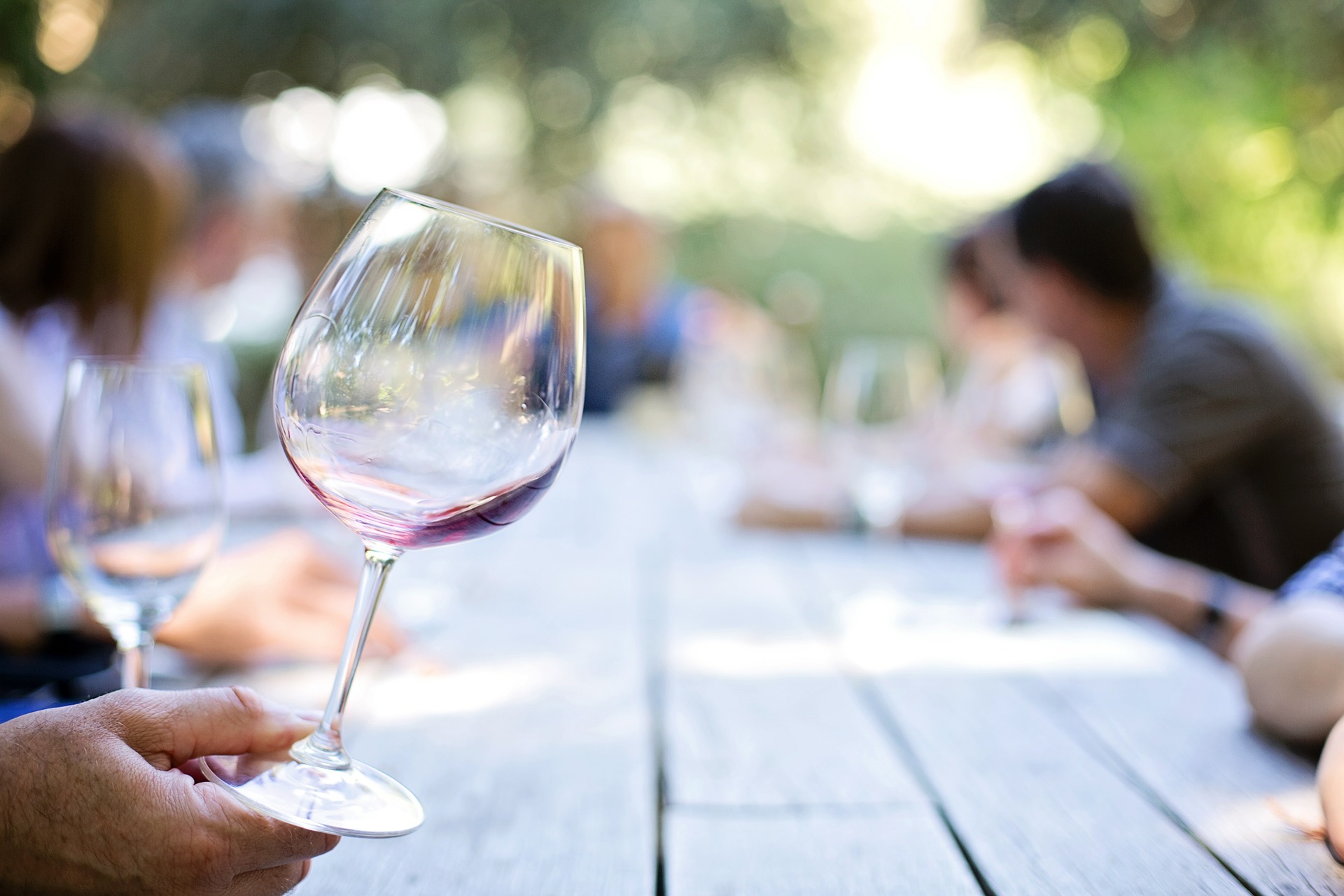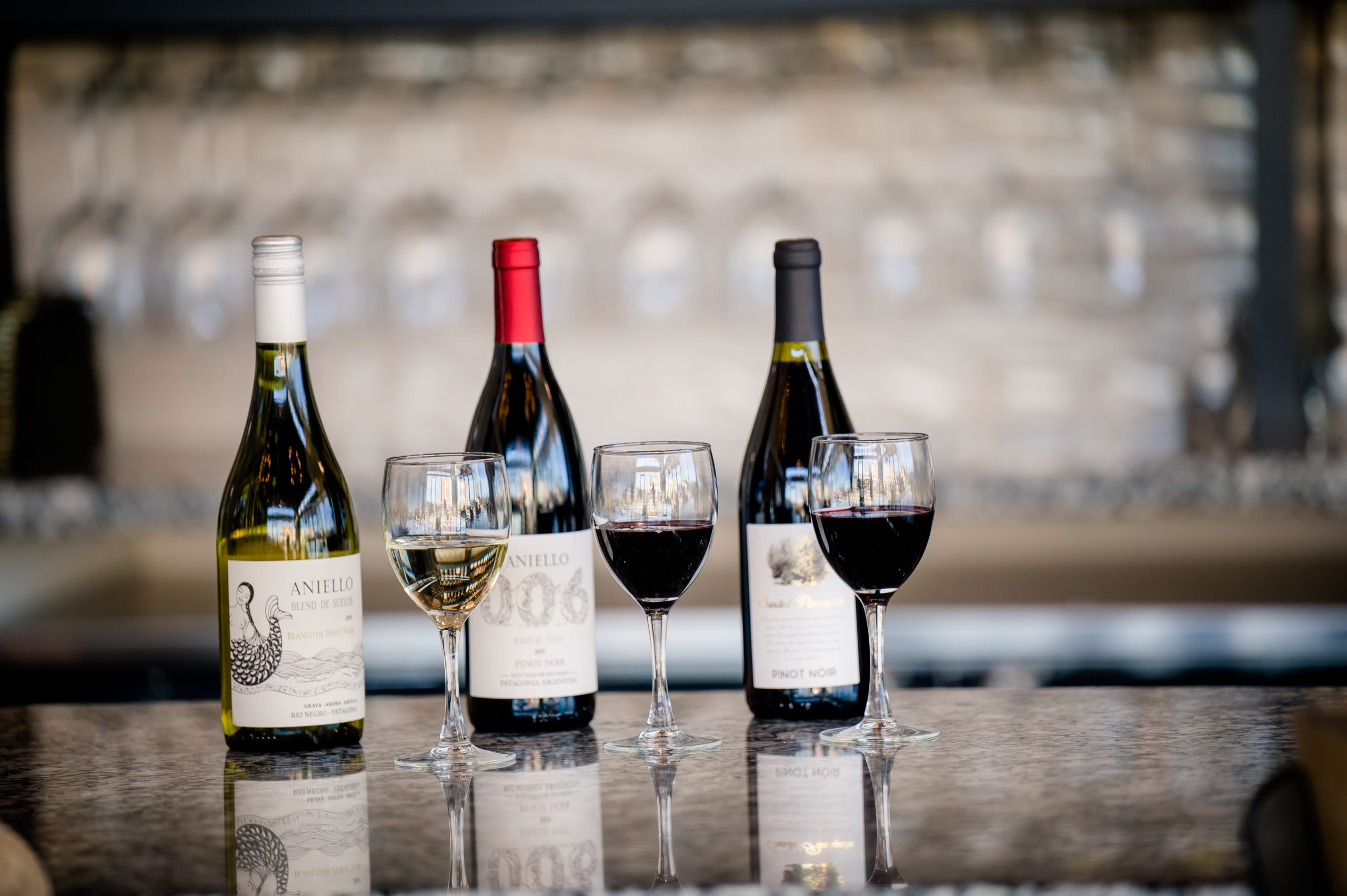One of the most common things I hear when I talk to people about wine is that they like to drink it but don’t know how to do it “correctly.” Of course they know how to drink it, but what they really mean is that they don’t know how to do a wine tasting to deepen their understanding and appreciation of wine. The good news is that anyone can learn to do a “proper” wine tasting and it really will help you appreciate wine and learn more about why you like certain wines, as well as guide you in choosing new ones.
The Process
There are three basic steps in wine tasting:
- Look at the wine
- Swirl the wine
- Sniff the wine
- Taste the wine
Each one contributes to the full experience of wine appreciation. Let’s delve into these a little.
Look
When you look at the wine, you’re looking for color. Is it red or white? What shade of red or white is it? This isn’t super important if you know what you’re drinking, but it’s really helpful for blind wine tastings, when the color will help you determine both the grape and the age of the wine. Even if you don’t need to evaluate the wine for a blind tasting, the color of the wine will tell you some interesting things:
- Age- Older wines tend to be darker than the younger ones of the same varietal.
- Taste- Lighter colored wines are often more crisp, refreshing, or even a little tart, while darker wines tend to be bolder.
To evaluate the wine by sight, you want to have a white background with good lighting. The white background prevents other colors from distorting the color of the wine. If you hold the wine up to a white background and tilt the glass, you’ll see a range of color, from the spot where the wine touches the glass to the bottom, where it’s darkest. This will give you a more accurate view of the color. When you’re out at a restaurant, this step isn’t as effective because you rarely have the lighting or background you need to truly see the wine.
You can also check out the wine’s legs (also called sheets) by tilting the glass and then moving it upright. The wine you see running down the glass tells you its viscosity (how thick it is). Higher alcohol wines tend to be more viscous, so the legs will run down the side of the glass more slowly than lower alcohol wines. This is not true 100% of the time, since other factors contribute to the viscosity, so make sure to confirm the alcohol content on the bottle if that’s important to you.

Swirl
Swirling wine is an important step to repeat throughout your wine tasting. Swirling the wine introduces air into your glass and helps open up the flavors and aromas. This happens because air helps the alcohol evaporate. If you don’t swirl the wine, your nose and taste buds will pick up alcohol before noting the other flavors. Don’t believe me? Give it a try. Smell the wine without swirling and then after you do. Do you notice more aromas after swirling?
Sniff
On TV you’ll see people sniffing their wine gracefully, but to really get a good sense of the aromas, you need to put your nose IN the glass. It looks a little ridiculous, but that’s going to give you the best vantage point to smell. You don’t have to smush your face into the glass, but you definitely want your nose to have plenty of access to the wine.
Now, when you take a sniff, you’re going to smell a few things. The first, or primary, aroma is from the grape itself and is normally fruity, herbal, and/or floral. Don’t stress about pinning down exactly what it is; just identify if it’s fruity, herbal, or floral. You’ll be able get into specifics once you’ve had some practice.
Next, you’ll notice the secondary aroma, which is caused by the winemaking process or anything the winemaker added to the wine. Bread, vanilla, and buttery notes are common.
Finally, the tertiary aromas are the result of aging in the bottle, so they won’t be present in all wines. These are the most savory aromas, like mushroom, earth, and leather.
Don’t panic if you can’t identify every single aroma- this will come with time. Start just by identifying the basic primary aroma and then worry about the rest later if you want to.
Taste
And finally after all that, it’s time to taste the wine. Take a sip- not a gulp- and let it sit in your mouth for a minute, swishing it around some if you want (not attractive but it does help you taste more flavors).
In addition to specific flavors, like certain fruits or spices, you’ll also notice different sensations when you take a sip of wine. These are indicative of other elements like tannin levels and acidity. If your mouth waters a lot when you take a sip, the wine is higher acidity. If your tongue feels all dried out, the wine has high levels of tannin. Alcohol is the slight burning sensation in the back of your throat.
Body is the way the wine feels in your mouth. It is a combination of all the components of the wine- tannin, acid, alcohol, sweetness- and how they interact with each other. Sweet, high alcohol, and high tannin wines typically have more body, while high acid wines have less. The way these different components interact determines how the wine feels in your mouth.

Take Notes
Make sure to take notes of the wines you taste. This will help you remember how you felt about different wines and will help you develop a sense for what you do and don’t like. If you want to really refine your palate, it will also help you track where you are on that journey. It’s always fun to try a wine for a second time after 6 months or a year and see what additional flavors and aromas you notice.
